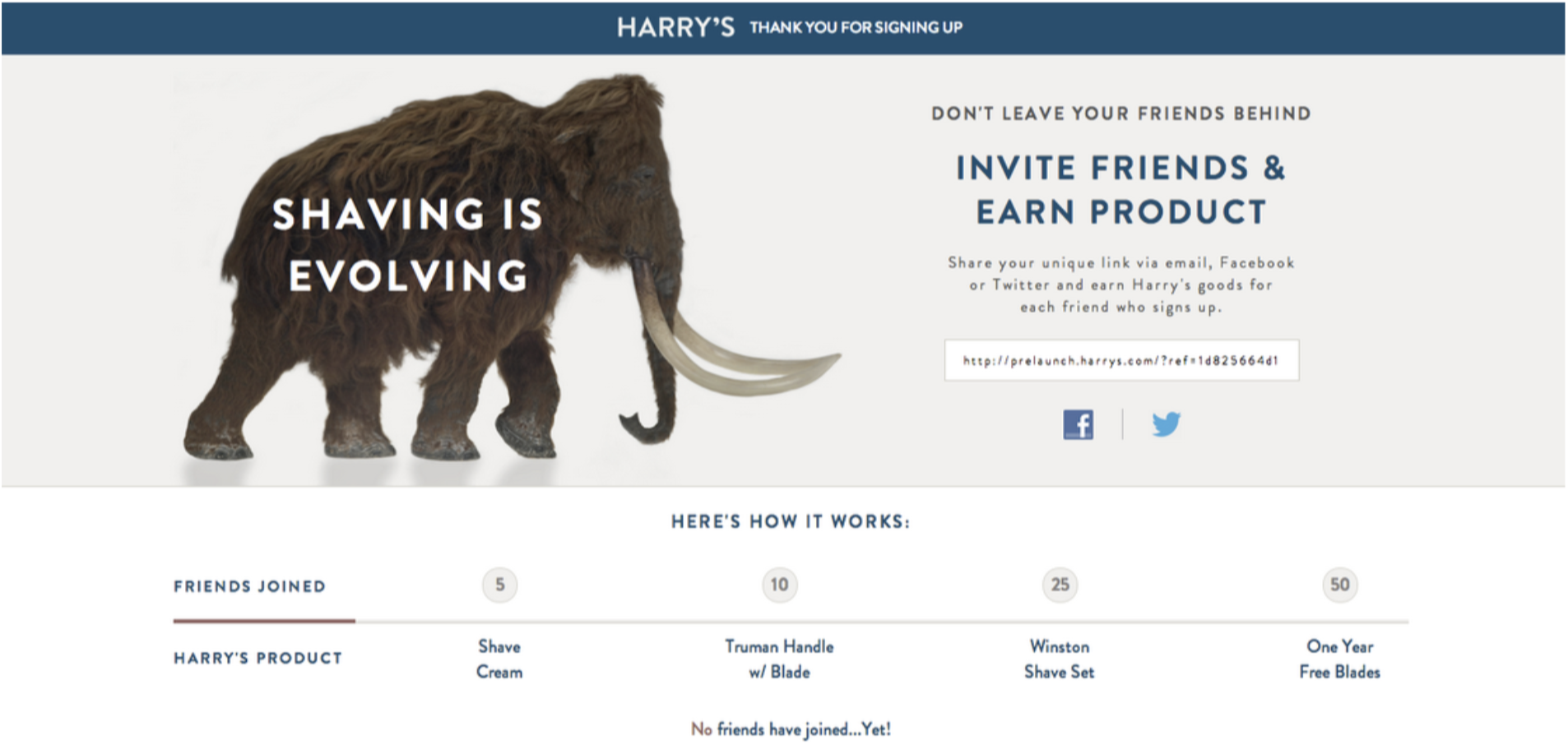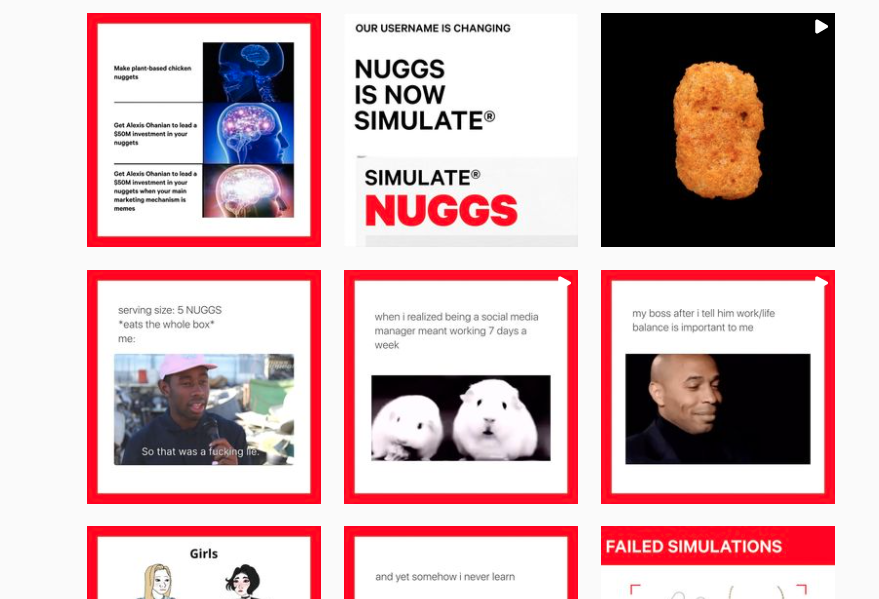You finally did it, after months/years of research, outsourcing, and back-and-forth business plans, your dream product is finally seeing the light of day. The good news is, you’re one step closer to seeing your product come to life… The bad news? Launching your D2C brand to the general public can be just as hard (if not harder) than the logistics of creating it in the first place. In this guide, we’ll walk you through how to run a successful product launch in order to ensure maximum impact. For the sake of this blog, we’ll cover launching a fictional food brand into the universe.
Here’s everything you need to know:
A Peek Behind the Curtains
Audiences love being teased. This is evident in things like clickbait culture and “next time on” previews at the end of any television show. This is exactly where you want to start your launch journey for your brand. Create a landing page previewing your D2C product (without giving too much away just yet) and launch your social media to announce a hint of things to come.
You might be wondering, why start executing public-facing materials now before your brand is fully in stores? The answer here is buzz. You want to get people excited about what’s to come, keep them intrigued and guessing so they keep checking in on updates. You’ll want to make sure you collect people’s emails on the landing page so these early adopters can be the first to learn about new developments (we explore this further in a future section).
One caveat for your teasing efforts is to ensure you place enough emphasis on this portion of the launch, meaning having an already devoted list of influencers or high-visibility individuals who can help you tease your product, being willing to spend ad dollars promoting the landing page, and getting people excited about your D2C brand. After your pre-launch page and social media are all set up, it’s time to start thinking about a solid referral program.
Spread the Word
If you’re anyone that continually looks at existing brand success case studies, you’ve surely heard of Harry’s stellar referral program. Harry’s executed the pre-launch landing page we discussed in our earlier section to get people excited about “the future of shaving.” This landing page, however, wasn’t the highlight of their launch efforts; Harry’s included a referral program on their landing page encouraging people not only to add their emails, but to also have their friends join in on the fun. 5 referrals got you a free shaving cream, 10 got you a Truman handle with a blade, 25 a free shaving set, and 50 a one-year free supply of blades. Not a bad deal, right?

The referral program was responsible for collecting 100,000 emails in a single week, which isn’t too shocking because people love free things. Consider how a referral program would work best with your product: this could be used as a tool to either collect emails or increase sales (if you want to instead prioritize referring other people to buy products instead of adding their emails, which is the harder task). Look at specific tools that also mesh the best with your website and ask yourself a few questions before picking the right tool including:
- Is there any needed integration for the tool? (Shopify/WordPress/etc)
- Do you want your referral program to be a one and done deal or does it need to be point-based? (Each referral gets you more points and you collect your prize based on the number of points you have.)
- What are the different ways you can promote your referral program? Does the tool you’re looking for offering a small chat banner to appear on your site? Can you create a separate landing page for it?
Once you’ve found the right tool and honed in on your referral strategy, it’s time to build an army.
Avengers Assemble
Influencer strategy isn’t just about paying people to take pictures of your product. It’s about building a community. Before reaching out to prolific individuals to partner with, consider the below questions:
- Does this person’s brand/persona mesh with your overall brand’s look and feel?
- How engaged is this user’s following?
- Does this influencer live in a country where your product is sold?
- Has this influencer previously partnered with a competitor brand/is there a conflict of interest?
Once you’ve answered these questions and found the perfect fit for people, it’s time to reach out to them and send them products to try for free. It’s very important that your brand ambassadors are actually fans of your product, so it’ll be really important to make sure they’ve had a chance to try it and can give any feedback/criticism in the initial discovery stages.
Once those individuals have been bought in, look into what type of relationship makes the most sense based on their preferences and past collaborations, and the needs you think could be achieved. Some influencers might be a great collaboration opportunity for other non-competitor products they offer (for example, if you’re running a cheese business, pair with a wine brand to showcase the best wine/cheese combo available to ensure mutual benefits). If you’re collaborating with a chef, find a way to have them incorporate your product into one of their recipes as an ingredient. Not every influencer ask has to be that heavy; however, there’s always room for standard Instagram post/story promotion of your products (generally conducted by more lifestyle influencers on the channel).
Consider which influencers make the most sense to only collaborate with once or twice, and which ones you want to build more long-term relationships with (the ones that you can truly call brand ambassadors). These individuals will act as an extension of your team, and it’s important to ensure they feel like they have weight, and can suggest ideas, suggestions and contribute more than standard one-and-done influencers.
Email Is Still King
One of the most important aspects of your D2C business will be to make sure you implement a proper email marketing plan. It’s easy for people to automatically start thinking about marketing emails they’ll want to send out and discounts/sales they can send to their audiences, but automatic emails and flows are always the priority.
Have a referral program set up? Make sure you have automatic emails that are sent to anyone who either signs up or refers a friend for a purchase. You’ll want to start building out all of the must-have automatic emails and flows that D2C businesses need including:
- Welcome email series flow
- Follow-up with more emails a few days after welcome email is sent encouraging those who haven’t purchased to buy one of your products
- Product confirmation email (generally set up through your commerce software like Shopify)
- Order shipped + arrived email
- Cart abandonment flow
- Browse abandonment flow
- High-lifetime-value emails (sent to customers who have purchased 2 or more products from your business)
- Lapsed customer flow
It’ll be really important to also make sure that you properly set up segments in your email marketing platform and ensure they’re dynamic so they automatically update. These segments can include:
- Master list
- New subscribers
- High-LTV audience (2+ purchases)
- Lapsed customers (individuals who haven’t made a purchase in the last 90 days)
- Event-specific segments
Once the automatic flows and segments are set up, you can start thinking about marketing-specific emails like newsletters, event emails, sale/discount emails, etc.
The Soft Launch Trial
Launching a D2C business presents a whole series of logistical challenges, many that fall outside of the marketing spectrum. Issues like shipping logistics, website purchase journey glitches, and quality of delivery need to be pinpointed before you launch your product into the ether.
Pushing out a soft launch for your business has many advantages, including ensuring that all of the product logistics highlighted are working accordingly, gives initial adopters a chance to weigh in on the entire journey and suggest feedback. It also provides you with insights on initial creative and messaging that’s resonating best with your audience across paid ads and your website.
Before you can set up your soft launch, you want to make sure all of your pieces are all good and ready (the same way they would be for the hard launch), including email marketing, shipping logistics, website optimizations, etc. You’ll then want to proceed with running a small ads campaign driving a few initial people to your website, which will give you the ability to test out different audiences and creative to see what resonates the best ahead of your hard launch.
The initial buyers will also showcase if any roadblocks and inefficiencies are present within the product workflow and logistics for shipping/receiving the product, which will give you an opportunity to work on any pain points ahead of the big launch.
Finally, look into specific website data (Hotjar, Google Analytics) to see where people are clicking and/or dropping off to make any necessary changes that will help increase overall conversions. Look into ways you can increase average order value as well and see how the changes impact overall revenue.
You might consider turning to growth marketing experts to drive rapid experimentation and help you build brand awareness, drive sales and increase conversions at this stage and beyond.
Social Engagement
Any great D2C brand needs a solid social media strategy, but with the ever-evolving amount of food brands out there right now, showcasing appetizing images of your products isn’t quite cutting it like it used to. Personality in today’s day and age trumps any glossy highly produced photos of your products, and your social presence voice needs to be established ahead of your launch.
Take a brand like Nuggs, which sells vegan nuggets, their social presence revolves directly around humor and witty content that’s so good, people can follow the account without even buying the product (not the ultimate goal here, but great for brand visibility). Here’s a look at how they’ve transformed their social feed into a myriad of memes and popular trends:

The task at hand here isn’t to necessarily emulate what Nuggs is doing or even to give your brand a comedic and meme-heavy feel, but to establish a personality so unique that people will want to come back for more.
Always start by creating a social strategy document to highlight your audiences, content themes, and include examples of tactical solutions that would help achieve those goals. From there on out, you can start building a social calendar and start populating it with content so churning new posts every day doesn’t become a tiring task.
The PR Element
Digital marketing is vital to your launch efforts, but traditional PR strategy is still a very important piece of your growth efforts. Consider partnering with a public relations firm (or doing some of the work yourself if the expertise is available in-house) to handle things like press releases to coincide with your product launch to generate media attention and buzz around the product.
Consider also using the PR firm for affiliate marketing in order to pay individuals and publications to feature your products on their social/websites. A great place to start is including your products on “Best ____ products” type lists, which usually generate higher amounts of traffic and interest in your product.
Time for the Big Launch
After all the different launch pieces are put in place, it’s time for the most exciting (and arguable most stressful aspect) of any brand launch, the physical launch event. Event planning sounds fun on paper but is no easy feat. You’ll want to ensure you coordinate on a few of the below logistics ahead of the big day:
- Location space for the event
- Is the location convenient for the invitees? Will it fit everyone on the invite list? Will it need furniture supplied or are they included in the venue? Do you need a kitchen, showing space, any other detail relevant to your event logistics?
- Guestlist
- Include friends, staff members, influencers, media folks
- Staff working the event
- These can include anything from waiters, bouncers, moving people, etc.
- Catering / Drinks
- Entertainment
- Anything from DJs to featured chefs to publicly show off your product in their recipes
- Take-homes
- What are some deliverables you can place to give your guests (example: shirts, tote bags, cards, discount codes, the physical product itself)
- Brand visibility
- Your guests and influencers will be taking a ton of pictures at your launch event, so make sure your brand is present front and center. Include banners, posters, and of course, the product itself, scattered throughout the entire venue
If the weather and logistics all end up working out in the end, you’ll have one final step to take care of: having fun and making sure everyone’s enjoying themselves.
You’ve made it this far, so give yourself a pat on the back.
Advertising (Round 2)
With the launch event behind you and initial learnings set in place from the soft launch, it’s time to use existing data to build your launch campaign. Consider your different segments, and look into what audiences you want to place in each part of the funnel process (remember that you have an existing engaged audience to use for middle and bottom of funnel retargeting from the soft launch of the campaign).
Make sure to look into what platforms make the most sense for your product, especially if you need to run shopping-specific ads set up through Google or Facebook marketplace (while also keeping in mind that Facebook marketplace does take a percentage of your profits).
Continue testing on top of your initial soft launch learnings, look at different audiences, competitor advertising, sending people to different landing pages, before starting to scale the budget up when you start seeing a positive overall ROAS.
Retention Tactics
Now that your product is up and running, you want to keep your new customer engaged and buying. Retention tactics will be a big part of your email strategy after choosing your segmentation strategy and showing content specific to people who made purchases, sending them specific discounts, and continuing to make them feel warm (consider loyalty-specific programs as well if this makes sense with the brand).
Within all paid advertising tactics, these can be achieved with your middle and bottom of funnel targeting efforts, so we can keep increasing lifetime value for specific customers. Ads and email will also be the best place to announce new products and give those loyal customers a specific sale code to utilize.
Conclusion
Every D2C brand launch will look different from the next, not every step highlighted here might make sense to utilize for your specific product; however, the general higher level strategies should apply for the majority of use cases.
Once these pieces are set in place, it’s time to start scaling up and testing your efforts to continue building off your success.






